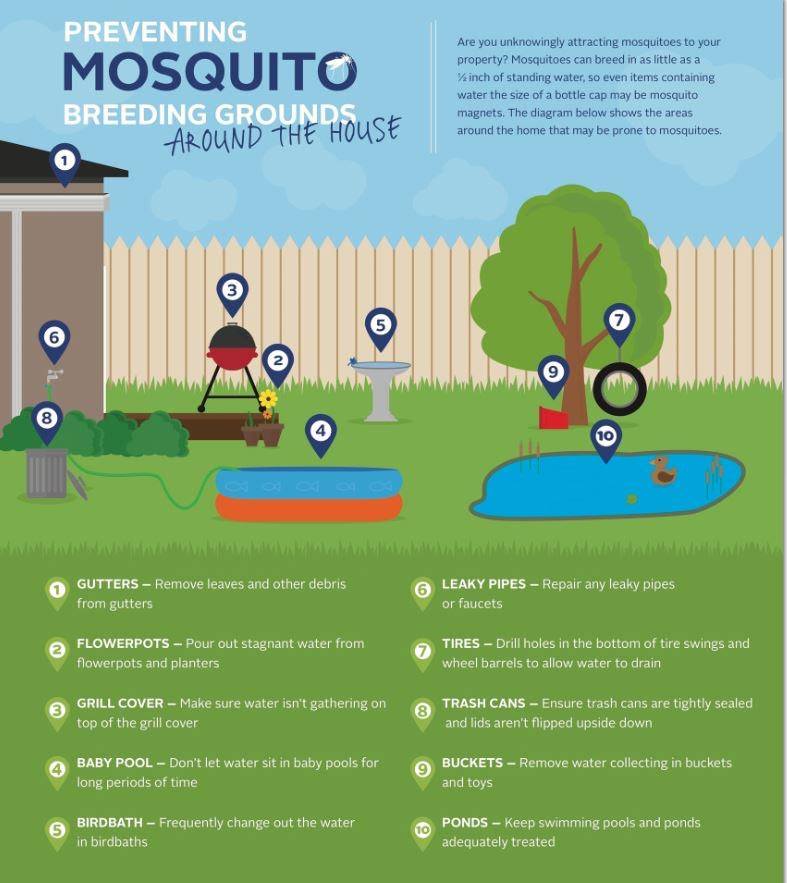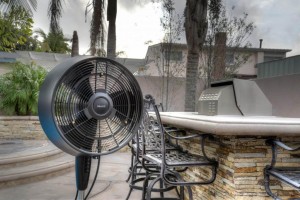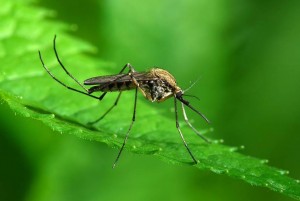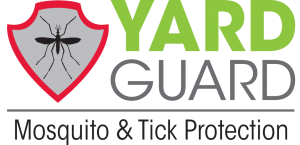Fall Pest Control Inspections
Fall is a great time for Viking to visit your home, inspect and give you recommendations on how to prevent mosquitoes from breeding and setting up for next year around your home.
This just in from the Center For Disease Control (CD) Three-Quarters of U.S. Has Suitable Climate for Aedes aegypti and Aedes albopictus Mosquitoes
Recommendations to prevent and eliminate mosquito breeding sites
As we approach the fall consider our Yard Guard program to help you deal with mosquitoes that will start to overwinter. Our technicians will inspect your property and give you guidance and recommendations to prevent and eliminate mosquito breeding sites. We are lucky here in the Northeast U.S. that we don’t have Sabethes spp. Mosquitoes. While they are beautiful to look at, these Latin American mosquitoes pack a big punch in regards to bites and diseases. Just look at these beautiful creatures. ( Courtesy Gil Wizen at http://gilwizen.com/sabethes)
About Sabethes
“There is no other mosquito in the world that has such an elegant appearance: its body is quite large, covered with blue and green iridescent scales. The legs are exceptionally long, each bearing a wide flattened brush of hairs, like a paddle. During flight the legs are extended forward and backwards, partially curved, giving the hovering mosquito a unique “aircraft” appearance. Members of the genus are found only in northern Latin America, and the females are important vectors of several tropical diseases, such as yellow fever and dengue fever. The function of the paddles found on the legs of males and females is poorly understood. A scientific study showed that males court and mate normally even when the paddles are removed, whereas paddle-less females are rarely approached by males. It is widely accepted among evolutionary scientists that elaborate ornaments on females take part in reversal of the sex roles, where females compete among themselves for the attention of and mating with the males. This may be a possible explanation for the extensive ornamentation on Sabethes females. Like many tropical mosquito species, Sabethes reproduce in small tree holes or bromeliads, where accumulating rainwater serves as medium for their aquatic larvae.”How you can prevent Mosquitos
As we approach mosquito season, you might be wondering, “How can I prevent mosquitoes in my yard?”. There are many, simple do it yourself ways you can help stop mosquitoes from biting you this summer at your home. From removing stagnant water sources, adding mosquito repelling plants, to cleaning gutters, there’s a lot you can do to help make your backyard an unfriendly yard to mosquitoes!
Please see the graphic below for more info on preventing mosquitoes at home! Need more help with mosquitoes? Check out our Yard Guard service and let us protect your property!

Preventing Mosquitos at Home

Mosquito Bite and Mosquito Prevention
You can take several steps to protect yourself from mosquito bites.
Avoid and exclude mosquitoes. Limit exposure to mosquitoes by:- Avoiding outdoor activities when they're most active, dusk to dawn
- Repairing any tears in the screens on your windows, doors and camping gear
- Using mosquito netting over strollers and cribs or when sleeping outdoors
- DEET Test after test shows DEET at 20% and higher a.i. is the most effective at repelling mosquitoes (Source Center for Disease Control)>
- Icaridin (also called picaridin)
- Oil of lemon eucalyptus (a plant-based compound)
- Don't use DEET-containing products on infants younger than 2 months.
- Don't let young children get DEET or icaridin-containing products on their hands or faces.
- Don't use oil of lemon eucalyptus on children under age 3 years.
- Don't apply repellent under clothing.
- Don't apply repellent over sunburns, cuts, wounds or rashes.
- When you go indoors, wash with soap and water to remove any remaining repellent.
- Long sleeves
- Socks and closed-toe shoes
- Long pants, possibly tucked into the tops of your socks
- Light colors
- A hat that protects your ears and neck or one with mosquito netting that covers your face
- Unclog roof gutters.
- Empty children's wading pools at least once a week, and preferably more often.
- Change water in birdbaths at least weekly.
- Get rid of old tires in your yard.
- Empty outdoor flower pots regularly or store them upside down so that they can't collect water.
- Drain your fire pit if water collects there.
Don’t Let Mosquitoes Chase You Indoors!
Bill Kolbe, Viking’s Board Certified Entomologist, has done personal research on air currents and flying insects. Twenty inch box fans placed strategically and pointed toward you will create enough air movement to keep mosquitoes off you while dining or enjoying your deck. Keep in mind, hungry mosquitoes may try and overcome the air currents. If they do just put the fans on high and they will move to other areas. Often you will see pedestal fans that oscillate and when connected to your garden hose will produce a mist. The combination of air currents and misting water will repel mosquitoes and other flying insects. These fans have low, medium and high settings for different comfort levels. Flying insects spend a lot of energy using their flight muscles. Most do not fly during rain and windy days. These fans provide relief during those hot summer days. Remember the two species of mosquitoes that transmit Zika virus are day time feeders.
see pedestal fans that oscillate and when connected to your garden hose will produce a mist. The combination of air currents and misting water will repel mosquitoes and other flying insects. These fans have low, medium and high settings for different comfort levels. Flying insects spend a lot of energy using their flight muscles. Most do not fly during rain and windy days. These fans provide relief during those hot summer days. Remember the two species of mosquitoes that transmit Zika virus are day time feeders.
What is the Zika virus
Zika virus is primarily transmitted by mosquitoes, especially the yellow fever mosquito (Aedes aegypti) and the Asian tiger mosquito (A. albopictus). These mosquitoes are found in the United States but their range is limited to the southern, southeastern, and mid-Atlantic regions.
To date, there have not been any locally acquired cases of Zika virus in the United States, though there have been in U.S. territories like Puerto Rico. Public health experts do not know whether Zika virus will be transmitted in the continental United States but the risk is present. People that travel to regions where Zika is prevalent can get the virus and when they return home, local mosquitoes can potentially transmit it to another person.
Here is what is currently known about Zika virus:
- Zika virus has not been confirmed to be transmitted in the continental U.S., but the number of reported travel-related cases continue to increase. Visit www.CDC.gov for the latest information.
- Anyone traveling outside of the country, especially to Central America, South America, and the Caribbean, should be aware of travel advisories currently in effect. If you fall ill upon returning home, seek medical attention.
- Zika virus causes mild flu-like symptoms in about 20% of infected people and about 80% of people have no symptoms at all. The major concern is the link between the virus and microcephaly, a birth defect associated with underdevelopment of the head and brain of newborns. There is currently no vaccine to prevent, or medicine to treat, Zika virus.
- Aedes mosquitoes breed in containers so eliminate areas of standing water such as empty bottles and cans, tires, buckets, flower pots, cups, and bowls, whenever possible. Any place that can hold water half of an inch deep is enough to allow mosquitoes to breed.
- The mosquitoes that can transmit Zika virus are aggressive daytime biters so take preventative measures whenever you will be spending time outdoors. - Wear long pants, long-sleeved shirts, and closed-toes shoes. - Protect your skin by applying an EPA-registered insect repellent containing at least 20% DEET, picaridin, or oil of lemon-eucalyptus. - Keep doors and windows closed whenever possible and cover any gaps with mesh screens.
What You Should Know About Zika Virus
What is Zika virus and how does it spread?
Information Provided by: http://www.vdci.net/ Zika virus (ZIKV) was first discovered in 1947 in the Zika Forest of Uganda. Shortly thereafter, it was isolated from mosquitoes and then humans in 1968. ZIKV is a "avivirus similar to yellow fever, dengue, Japanese encephalitis, and West Nile virus. Prior to 2007, it had only been detected in central Africa and throughout southeast Asia. However, in 2007, it was associated with a disease outbreak on Yap Island in the south Paci#c, representing the #rst time it had spread outside of Asia. From there, it spread to South America with human cases first reported in 2014. ZIKV is transmitted by Aedes mosquitoes. In the Americas, it has only been linked to transmission by Aedes aegypti. Ae. aegypti is also responsible for the transmission of dengue virus, yellow fever virus, and chikungunya virus. Recently in Africa, the virus was detected in Aedes albopictus, or the Asian tiger mosquito; hence, it is likely that Ae. albopictus could vector the virus in the Americas.Mosquito Facts
- Mosquitoes are the deadliest animals/insects on earth.
- Responsible for more deaths than any other animals or insects die to the diseases they carry; Malaria, Dengue, West Nile, Encephalitis, and even Heartworm.
- Most female species will lay eggs in the water surface/fresh or stagnant.
- Can lay up to 300 eggs at a time and 3,000 in her life.
- Will bite warm, and coldblooded animals.
- Stimuli that in. uence biting include CO2, temperature, moisture, smell, color and movement.
- While males live only a week, females live up to a month.
- Millions of deaths per year, especially among children and the elderly in developing countries.
Download The Zika VDCI Fact Sheet
Zika Virus – A mosquito borne illness
Zika Virus – A mosquito borne illness. Viking® Pest Control, a member of National Pest Control Association, would like to share* some concerns over Zika virus. This illness is an emerging mosquito-borne disease and it continues to grow. The public is urged to take precautions now to help curb problems during the warmer months when biting mosquito populations tend to increase. Viking will update our web site as more current and relevant information becomes available.
 Cindy Mannes, vice president of public affairs for NPMA states: “We recognize that local vector transmission of Zika virus has yet to be confirmed in the continental U.S., but the number of reported travel-related cases continues to increase.” “We are monitoring the situation closely and working to help educate the public on ways to not only avoid contact with mosquitoes when traveling to regions where the disease is present, but also how they can eliminate breeding grounds at home as spring and summer approaches.”
Zika virus causes mild flu-like symptoms in about 20 percent of infected people, but the main concern among leading health organizations centers on a possible link between the virus and microcephaly, a birth defect associated with underdevelopment of the head and brain. The World Health Organization (WHO) recently declared Zika virus a global health emergency.
“Currently, there is no medication to treat Zika virus, so those who experience symptoms should get plenty of rest, stay well hydrated and take acetaminophen for pain,” noted Dr. Jorge Parada, medical advisor for NPMA and infectious disease specialist. “The best way to avoid contracting Zika virus and other mosquito-borne diseases is to take preventive measures when spending time outdoors.”
Cindy Mannes, vice president of public affairs for NPMA states: “We recognize that local vector transmission of Zika virus has yet to be confirmed in the continental U.S., but the number of reported travel-related cases continues to increase.” “We are monitoring the situation closely and working to help educate the public on ways to not only avoid contact with mosquitoes when traveling to regions where the disease is present, but also how they can eliminate breeding grounds at home as spring and summer approaches.”
Zika virus causes mild flu-like symptoms in about 20 percent of infected people, but the main concern among leading health organizations centers on a possible link between the virus and microcephaly, a birth defect associated with underdevelopment of the head and brain. The World Health Organization (WHO) recently declared Zika virus a global health emergency.
“Currently, there is no medication to treat Zika virus, so those who experience symptoms should get plenty of rest, stay well hydrated and take acetaminophen for pain,” noted Dr. Jorge Parada, medical advisor for NPMA and infectious disease specialist. “The best way to avoid contracting Zika virus and other mosquito-borne diseases is to take preventive measures when spending time outdoors.”
 Cindy Mannes, vice president of public affairs for NPMA states: “We recognize that local vector transmission of Zika virus has yet to be confirmed in the continental U.S., but the number of reported travel-related cases continues to increase.” “We are monitoring the situation closely and working to help educate the public on ways to not only avoid contact with mosquitoes when traveling to regions where the disease is present, but also how they can eliminate breeding grounds at home as spring and summer approaches.”
Zika virus causes mild flu-like symptoms in about 20 percent of infected people, but the main concern among leading health organizations centers on a possible link between the virus and microcephaly, a birth defect associated with underdevelopment of the head and brain. The World Health Organization (WHO) recently declared Zika virus a global health emergency.
“Currently, there is no medication to treat Zika virus, so those who experience symptoms should get plenty of rest, stay well hydrated and take acetaminophen for pain,” noted Dr. Jorge Parada, medical advisor for NPMA and infectious disease specialist. “The best way to avoid contracting Zika virus and other mosquito-borne diseases is to take preventive measures when spending time outdoors.”
Cindy Mannes, vice president of public affairs for NPMA states: “We recognize that local vector transmission of Zika virus has yet to be confirmed in the continental U.S., but the number of reported travel-related cases continues to increase.” “We are monitoring the situation closely and working to help educate the public on ways to not only avoid contact with mosquitoes when traveling to regions where the disease is present, but also how they can eliminate breeding grounds at home as spring and summer approaches.”
Zika virus causes mild flu-like symptoms in about 20 percent of infected people, but the main concern among leading health organizations centers on a possible link between the virus and microcephaly, a birth defect associated with underdevelopment of the head and brain. The World Health Organization (WHO) recently declared Zika virus a global health emergency.
“Currently, there is no medication to treat Zika virus, so those who experience symptoms should get plenty of rest, stay well hydrated and take acetaminophen for pain,” noted Dr. Jorge Parada, medical advisor for NPMA and infectious disease specialist. “The best way to avoid contracting Zika virus and other mosquito-borne diseases is to take preventive measures when spending time outdoors.”
The following are suggestions for mosquito prevention tips:
- The type of Aedes mosquito that carries Zika virus is a daytime biter, so people should take steps to protect their skin from mosquito bites at all times of the day by applying an insect repellant containing at least 20% DEET, picaridin or oil of lemon-eucalyptus. Also, consider wearing long pants, long-sleeved shirts and closed-toe shoes.
- Mosquito-borne diseases that may be rare in the U.S. are common in many foreign countries, so anyone traveling outside of the country should be aware of travel advisories currently in effect. If a person falls ill upon returning home, seek prompt medical attention.
- Homeowners should eliminate areas of standing water around the property such as flowerpots, birdbaths, baby pools and grill covers. Mosquitoes need only about a half an inch of water to breed. It’s also recommended to screen all windows and doors, and patch up even the smallest tear. If you have concerns about mosquito activity, contact Viking Pest Control
 and ask about our Yard Guard Program. William A. Kolbe, Board Certified Entomologist and Viking Technical Director states: “Our Yard Guard Program helps reduce populations of biting mosquitoes. Just as important is our inspection of your property as well as recommendations you can make to eliminate breeding sites. While impossible to eliminate all mosquitoes, our program will reduce populations of adult mosquitoes. Our program does not guarantee that you will never be bitten by mosquitoes since they can fly in from neighboring yards and properties. Our goal is to reduce populations and help you eliminate areas where mosquitoes breed. Our program does offer a reduction in the numbers of mosquitoes and thus reduces your chances of being bitten. Personal protection such as the use of DEET (recommended by the Center for Disease Control) will also help reduce mosquito bites. Follow us at preview0.dev1.snyderpreview.com or facebook to keep abreast of Zika virus.
and ask about our Yard Guard Program. William A. Kolbe, Board Certified Entomologist and Viking Technical Director states: “Our Yard Guard Program helps reduce populations of biting mosquitoes. Just as important is our inspection of your property as well as recommendations you can make to eliminate breeding sites. While impossible to eliminate all mosquitoes, our program will reduce populations of adult mosquitoes. Our program does not guarantee that you will never be bitten by mosquitoes since they can fly in from neighboring yards and properties. Our goal is to reduce populations and help you eliminate areas where mosquitoes breed. Our program does offer a reduction in the numbers of mosquitoes and thus reduces your chances of being bitten. Personal protection such as the use of DEET (recommended by the Center for Disease Control) will also help reduce mosquito bites. Follow us at preview0.dev1.snyderpreview.com or facebook to keep abreast of Zika virus. - Some information courtesy of National Pest Management Association
Winter Pests
Don’t Let Bugs and Rodents Ruin Your Cozy Home
While we associate spring and summer with pests because of the seasonal arrival of termite swarms, mosquitos, and baby animal populations, the reality is that the winter is the worst time for pests for many New Jersey area homeowners. While cold weather does kill of many of the nuisance pest species, other ones move inside to overwinter, which can turn pests that are a mere nuisance outside into a major problem. Pests that come inside can damage homes and belongings and expose families to illnesses. That is why it is so important to keep pests outside. Viking Pest Control is a specialist at pest prevention. Just like with most other problems, preventing a pest infestation is much easier than eradicating pests once they have invaded a home. That is why Viking Pest Control performs pest prevention services for their customers. We not only inspect your home to spot potential sources for pest invasions, but also remediate those problems to keep the pests outside. Of course, we also look for evidence that pests are already in your home. This evidence includes gnaw marks, droppings, and other tall-tell signs that the pests are lurking. There are affordable things you can do to prevent winter pests. Not all of our customers need a professional pest inspection. You can take steps to keep winter pests out of your home, many of which are absolutely free or cost very little money. Dedicate a morning or afternoon to the inspection and the time you spend will be well worth it, by helping you achieve a pest-free home this winter.- Use plastic containers for storage instead of cardboard boxes; cardboard is easy for rodents and bugs to eat through and does not deter pest infestations.
- Dispose of your inside garbage regularly and, if you store garbage between trash pickups, keep your garbage cans located away from your home and use locking lids to discourage pests from invading the garbage. While you are at it, store any firewood away from the house, as well. You do not want your home or your yard to be seen as a feeding ground for pests.
- Use screens to block household vents and other openings.
- Install gutters to divert water away from your home; standing water attracts all sorts of pests. Fix any water leaks in your home; rodents and bugs can use even tiny water leaks as a water source.
- Store food in airtight containers.
- Seal any cracks or holes on the outside of the home, and ensure that any areas where utilities and pipes enter your home are caulked so that they do not have any holes surrounding them. Even a small hole can become a passageway for pests.
- Inspect for gnaw marks. Wires, insulation, and walls are all favorite targets for rodent gnawing, so inspect them carefully.
- If you see any evidence of pests, including gnaw marks, droppings, or suspicious scurrying sounds, handle the problem immediately. Pets multiply very quickly and it is a lot easier to control one or two pests than it is to control a colony!
Fall Pest Prevention
It is Easier and Safer to Keep the Pests Out Than It is to Try to Get Them Out
When you think of a pest control company, your mind probably automatically goes to exterminators and pesticides. While those are a part of a pest control business, anyone with experience in pest control will tell you that it is much easier and more affordable to keep pests from invading a home than it is to make a home pest-free after it has been infested. That is why Viking Pest Control is happy to offer a fall pest prevention package for its New Jersey area customers. The key to pest prevention is to keep them from coming into your home. Why do they want in your home in the first place? Your home is warm and inviting, while outside it is starting to get cold and hostile. In fact, many pests know that they will not survive the winter if they stay outside, but that they can thrive in a warm environment. Therefore, pests will try very hard to get into your home and even relatively large pests, like mice, can come through very small spaces. Step one is to locate any pest entrances. Common entrances include around doorways and windows, and any normal entrances to your home, like dryer vents and soffit gaps. After an inspection, the Viking Pest Control pest prevention experts will seal any pest entrances. This can include securing your dryer vent, blocking potential entrances with copper mesh, using caulk to fill gaps in trim and siding, and using weather stripping to ensure that doors and windows are snug. Step two is to take preventative measures to keep your home from seeming inviting. Warmth is great, but pests need more than warmth to survive. It is important to deprive them of the moisture they need, so Viking’s pest prevention experts will look for any sources of moisture in your home, such as leaks under sinks and in cabinets, and let you know about them. They will also look for areas that are hospitable for pests such as clutter under sinks or along floors. Prevention is ongoing, so step three will require collaboration between you and Viking’s pest control team. You will need to keep pet and human food sealed and out of reach. Furthermore, if there are signs that you already have bests, Viking may use pesticides or employ traps to eliminate the current pet population. Working together, you and Viking Pest Control can ensure a pest-free fall for your home!Proper Trap Placements for Summertime Pests
Proper Trap Placements for Summertime Pests
By Gregory Covello A.C.E.
Summer is finally here and as our gardens flourish so do the pests that invade them. Throughout my travels I often encounter do-it-yourselfers trying to eliminate a variety of pests using various traps. Many times I can’t help to notice the poor placement of pest traps. I would like to share some tips on proper placement of various traps to affectively capture your target pest.
One of the most common trap placement blunders that I encounter is placements of lure traps near areas where humans will congregate. I have witnessed a countless number of yellow jacket traps place near pool yards and picnic tables. There are a variety of yellow jacket and wasp traps commercially available to reduce the number of these stinging insects without using pesticides. These traps utilize either a commercially prepared lure, or a beverage or your choice (extra sugary sodas or beer would be my recommendation) to attract the insect to the trap. When you place these traps on or near the picnic table that you are eating at, you are actually enticing the stinging insects towards you. Stinging insect traps should be placed away from the areas that you are trying to protect. Traps should be placed by hanging them from trees, poles, or fences where people will not be spending time. Try to establish a perimeter of these traps along your property line, not near your home or garden.
In similar fashion to the stinging insect trap, there are commercially available mosquito traps. Most of the mosquito traps that are available utilize a propane tank that fuels a unit that is designed to emit carbon dioxide that will attract mosquitoes within a certain radius. You do not want the center of the attraction zone to be your garden. If you choose to invest in one of these units, once again, keep it away from areas frequented by people such as gardens, and outdoor dining areas.
One of the most common summer garden pests also has a commercially available lure trap. The Japanese beetle trap, often easily recognized by the hanging bag full of bugs is another attractant type trap. Most of these traps are actually sold with pole type stand to hang the trap from. The lures available with these traps are highly attractive to Japanese beetles making it once again extremely important to place these traps away from you roses and veggies. Japanese beetle traps should be placed upwind of your garden, not in it. Also, follow the labeled instructions for the number of units you should use. Often, multiple units may be necessary to get a desired level of control.
Traps are not only for insect pests. Another common summertime invader is the groundhog. There are various types of live traps available to get rid of this common excavator. The common box style live trap can be an effective tool if placed correctly. Sometimes you have to study your target a little before placing a trap. Often I see traps placed directly next to a groundhog burrow. Although you will occasionally trap a groundhog with trap placement near the burrow, a better solution is to place the trap where the groundhog is feeding. Leave a trail of bait leading up to the trap. Make sure bait is place behind the trigger plate, not in front of or on the trigger. Be creative with you bait choices when trapping a groundhog. As a general rule, use whatever the groundhog may be damaging or eating out of your garden. If your tomatoes are getting eaten, using a tomato as bait is probably a good choice. I have successfully used apples, tomatoes, and dark leafed lettuces that stand up well in the high summertime temperatures. I have heard of successes using cantaloupe and other fruits, however, I cannot share any personal success stories with cantaloupe. Unless the trap you have is specifically designed to place directly over the burrow, try not to place the cage too close to the burrow as to not alarm the animal.
Best of luck to you with your trapping endeavors.











